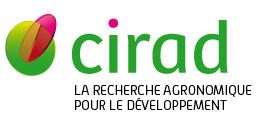Latest attempts to untangle the M. mycoides cluster
Gaurivaud P., Poumarat F., Thiaucourt F., Manso-Silvan L., Tardy F.. 2015. In : Progress in human and animal mycoplasmology: book of abstracts. Istanbul : Pendik Veterinary Control Institute, p. 7. Progress in Human and Animal Mycoplasmology, 2015-06-03/2015-06-05, Istanbul (Turquie).
Background: The Mycoplasma mycoides cluster is a phenotypically and genetically cohesive group of five (sub)species that are pathogenic for ruminants, four of which are listed by the World Organization for Animal Health. The cluster has an eccentric phylogenetic position within the family Entomoplasmataceae, which holds species associated with arthropod or plant hosts. Objectives: We propose a review of how recent studies have contributed to deciphering the evolutionary history of cluster members, their interrelationships, epidemiology and interactions with their host. Methods / Conclusions: The increased availability of genomic data has permitted a quantum leap in our understanding of the cluster. Genomic data, combined with temporal and geographical data, have made it possible to date back the emergence of the cluster and of. individual taxa within the c1 uster and to propose historical routes for strains dissemination. Furthermore, genomic data have also highlighted the existence of horizontal gene transfer between the cluster and a remote phylogenetic group, as well as hybridizations within the cluster. Concomitantly, the taxonomy of the cluster has been simplified. Ali these studies have necessitated the availability of several representative isolates. ln contrast, because the newly renamed species M. leachii has been very seldom reported, the origin of sporadic emergence of this lineage, derived from M. caprico/um but highly hybridized with M. mycoides, has yet to be clarified. Finally, other recent studies, such as our work on capsular and cell-unbound exopolysaccharides, have also shed newôñ light on the interaction of members of the cluster with their animal host. (Texte intûˋgral)
Documents associûˋs
Communication de congrû´s
Agents Cirad, auteurs de cette publication :
- Manso-Silvan Lucia — Bios / UMR ASTRE
